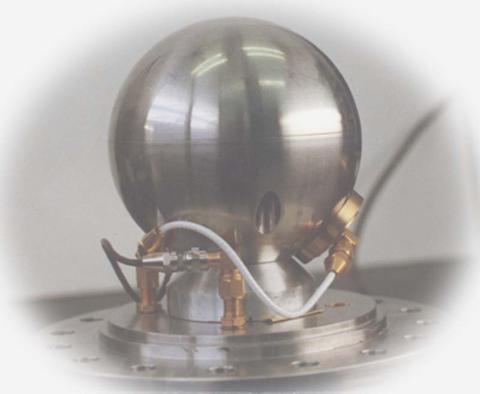Dr. Richard A. Perkins
Brief
Dr. Perkins studies thermophysical and transport properties as a researcher in the Experimental Properties of Fluids Group of the Thermophysical Properties Division at NIST, Boulder. Dr. Perkins received his B.S. (1979) and Ph.D. (1983) in chemical and petroleum refining engineering from the Colorado School of Mines. He then worked for two years as a research associate in the Chemical Engineering Department at Rice University with Professor Riki Kobyashi before accepting a position as a chemical engineer at NIST, Boulder. He has done research on synthetic fuel properties, hydrates of natural gas, bio and process separations, and convection in porous media. His thesis work focused on the thermal conductivity of synthetic fuels from coal and included development of a unique transient-hot-wire apparatus that could be operated with either ramp-power or step-power heating. He currently studies the thermal conductivity and thermal diffusivity of gases, liquids and supercritical fluids with the NIST transient hot-wire apparatus at temperatures from 55 K to 750 K with pressures up to 70 MPa. Fluid system that have been studied include air, cryogenic fluids, alternative refrigerants, natural gas, aqueous mixtures, rocket propellants, turbine fuels, bio-fuels, and working fluids for power generation. His fluid property work at NIST has also included work on vibrating-wire viscometers, a light scattering apparatus to measure thermal diffusivity, isochoric calorimeters, and a spherical resonator to measure sound speed. In his research areas he has published approximately 60 research papers, including contributions to book volumes. He has worked on international round-robin studies and development of international consensus standards for viscosity and thermal conductivity. His recreational interests include hiking, climbing, snowshoeing, cross-country skiing, backpacking, fishing, kayaking, walking his dog, and just about anything else outdoors.
Research Interests:
Thermal Conductivity and Thermal Diffusivity:
Thermal conductivity work at NIST, Boulder began with steady-state parallel-plate measurements of the thermal conductivity of cryogenic helium and hydrogen at temperatures from 17 to 200 K (H.M. Roder and D.E. Diller, 1970). Hans M. Roder began development of the cryogenic transient hot-wire apparatus at NIST in 1978. Dr. Perkins began development of a transient hot-wire apparatus at Colorado School of Mines in 1979 with Roder on his thesis committee. Roder began development on the second transient hot-wire apparatus for high temperatures in 1986 and Dr. Perkins joined the project in 1987. Today, these two apparatus have many hot-wire cells and offer unique capability to measure the thermal conductivity and thermal diffusivity of gases, liquids and supercritical fluids at temperatures from 55 K to 750 K with pressures up to 70 MPa. Recent work includes measurement and correlation of the thermal conductivity and thermal diffusivity of rocket propellants, turbine fuels, hydrogen at elevated temperatures, 4th generation alternative refrigerants/working fluids, bio-fuels, and high-temperature aqueous mixtures for advanced gas turbines.
The transient hot-wire apparatus at NIST are absolute, requiring no calibration with a fluid of known thermal conductivity, and are constantly evolving to adapt to new fluid systems and to reduce uncertainty. Some important developments include: nulling improvements to allow thermal diffusivity determination, thermal radiation analysis for absorbing-emitting fluids, pre-polarization to reduce errors with polar fluids, electrically insulated hot wires (anodized tantalum) for conducting fluids, steady-state hot-wire capability for dilute gases, and AC drive/phase-sensitive measurement (1-30 kHz) for polar/weakly conducting fluids.
Dr. Perkins is active in the development of reference data standards for fluids such as toluene and water to allow reliable calibration and verification of thermal conductivity apparatus. He is also active in the development of international consensus standards for the viscosity and thermal conductivity of key industrial fluids such as water and hydrogen.

Calorimetry:
Dr. Perkins has long been interested in calorimetry, beginning with his post-doctoral studies when he developed a heat-flux type differential scanning calorimeter for high-pressure studies of natural-gas hydrates. He has worked with Dr. Joseph Magee at NIST on constant-volume adiabatic calorimeters to measure triple points, heats of fusion, densities, vapor pressure, and two-phase and isochoric specific heats of refrigerants and natural-gas components. These properties are used during development of accurate multi-properties equations of state.
Sound Speed:
The sound speeds of both the liquid and gas are also valuable for the development of accurate multi-property equations of state. Our group has apparatus that have been used to measure liquid sound speed with the pulse-echo technique and gas sound speed with cylindrical and spherical resonators. Our group is currently developing a new spherical resonator for measurements of gas sound speed at temperatures from ambient to 500 K with pressures up to 35 MPa. Initially this resonator will allow determination of the ideal-gas specific heat of potential working fluids for organic Rankine cycles.

Recent Representative Publications
Huber, M.L., Laesecke, A., Perkins, R.A., Model for the Viscosity and Thermal Conductivity of Refrigerants Including a New Correlation for the Viscosity of R134a, Ind. Eng. Chem. Res., 42, 3163-3178, 2003.

